National Stock Exchange Ltd.
March 10, 2023 | Stock Talks

Scope of NSE- A proxy play to the growing Indian Capital Market
Whenever an investor makes a trade, there are various stock market participants that ensures smooth functioning of these trades. One such company is National Stock Exchange. Staying true to our investment style of peripheral play, we believe NSE is a good proxy play on the growing Indian capital market. Let’s understand the scope and business model of how NSE derives its revenue and profitability.
The major participants of the market are explained below:

1. SEBI - SEBI stands for Securities and Exchange Board of India. It is a statutory regulatory body that protects the interests of investors along with regulating the securities market.
2. Market Intermediaries - Intermediaries are entities that are involved in a financial transaction in the market apart from the buyer and seller. These are institutions that help you carry out your investment activity smoothly while ensuring all the rules laid out by the regulator are met.
3. Investors- They are individuals or organisation that invest their money in the capital of various listed entities.
4. Companies- Every share that you see available to be purchased or sold in the stock market today are those issued by publicly traded companies. When a company makes an IPO it becomes publicly traded, which means it introduces itself in the stock exchange.
5. Stock Exchanges- Often used interchangeably with stock market, A stock exchange is a marketplace or the infrastructure that facilitates trading. On the other hand, a stock market is an umbrella term representing all of the stocks that trade in a particular region or country. One such example of a Stock exchange is NSE.
About NSE
National Stock Exchange of India Limited (NSE) is one of the leading stock exchanges in India, based in Mumbai. NSE was incorporated in 1992, recognized as a stock exchange in 1993 and commenced operations in 1994.
NSE has been consistently ranked as the largest stock exchange in India in terms of total and average daily turnover for equity shares since 1995 (based on SEBI data). It is one of the largest stock exchanges in the world by market capitalization. NSE was the first exchange in India to implement electronic or screen-based trading which began its operations in 1994.

Now, how does a trade take place?

Companies list their securities on the stock exchanges and Investors invest in them via Brokers.
Companies pay the stock exchange listing fees to get their securities listed.
The brokers also charge transaction fees from investors for executing their trades on behalf of the Exchange.
These transaction charges are a direct source of income for Exchanges.
One such example of transaction charges charged by Zerodha (a broker) is shared in this snapshot below.

So, whenever an investor executes a trade, revenue in form of Transaction charges is received by the exchange.
Revenue Model
Just like any other exchange, NSE offers services like exchange listing, trading services, clearing and settlement services, indices, market data feeds, technology solutions and financial education offerings.
Indian exchanges charge on value basis (turnover), whereas global exchanges charge on the basis of volumes.
Transaction Charges (75% of total revenue)
Transaction charges are charges that the exchange levies on the trades conducted on the platform and are based on the transaction value.
It is directly proportional to the level of market activity, household savings and investments.
Transaction charges accounts for majority of the revenue mix of NSE.
Unlike global exchanges, NSE have high dependency on transaction charges since other revenue streams are at nascent stage.

Growth Drivers in Transaction Charges:
- Sharp rise in Average Daily Turnover (ADTO)
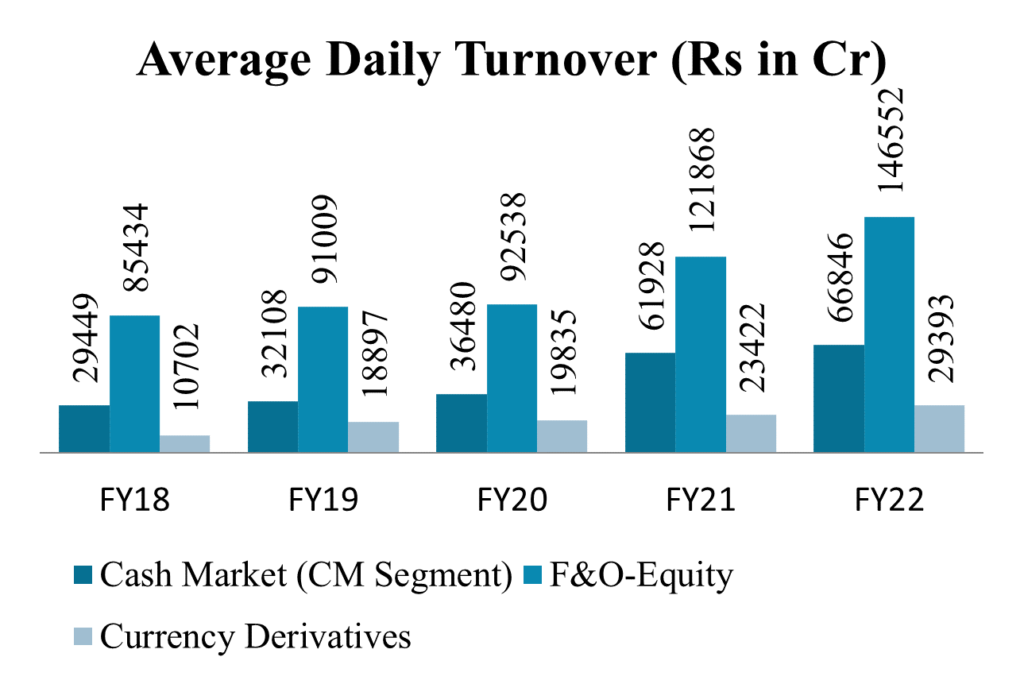
- Increase in proportion of big-ticket size orders

- Increase in DEMAT a/c will lead to increase in trades in the market.

Other Services (25% of Total Revenue)
- Listing services
- Book-Building fees
- Services to corporates
- Clearing Services
- Data Feed Services
- Investment Income
- Other sources of income (Training and Support Services
Cost Model
Just like any other company, NSE ltd also has a lot of expenses that are incurred regularly to ensure the smooth operations of the business. These are the major heads of expenses.
IT and telecom expenses and Employee expenses constitute nearly half of the total expenses incurred.
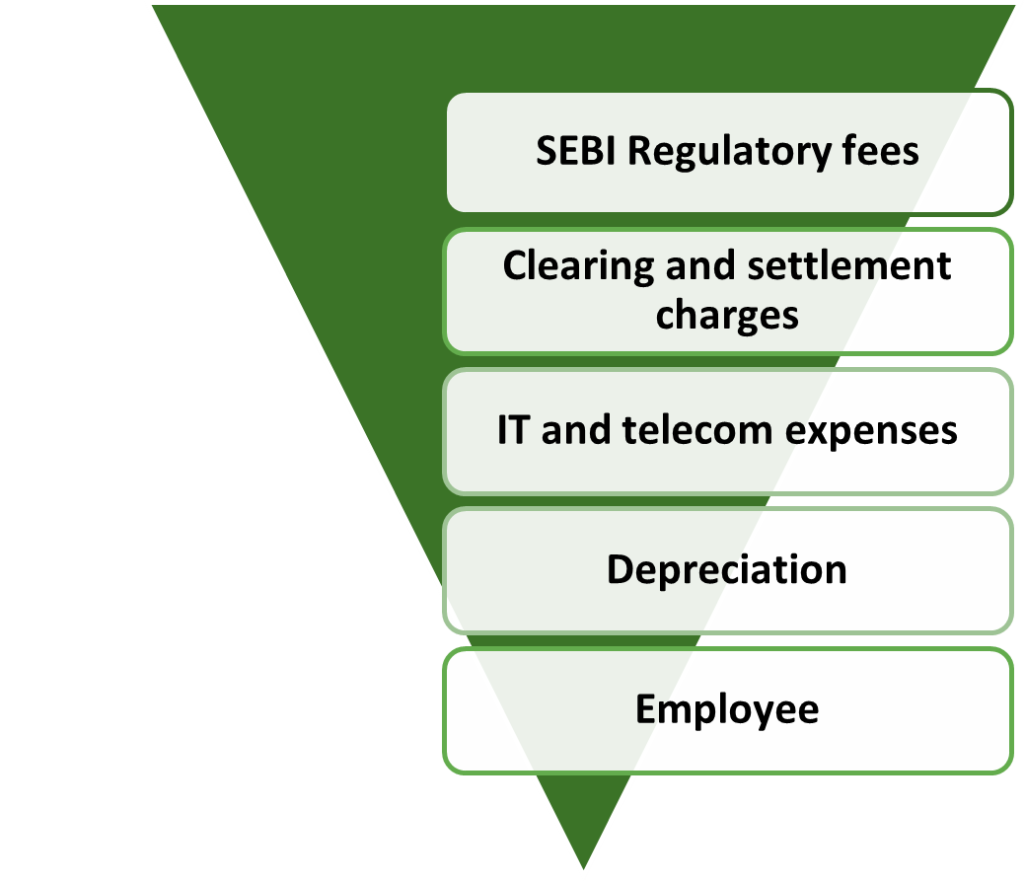
- IT and Telecom expenses include-Repair & maintenance – trading & computer system, IT Management & Consultancy charges, Software expenses, leased line charges, web trading related expenses and Network infrastructure management charges.
- Clearing and settlement charges are variable in nature and are directly linked to value of turnover handled by clearing corporation, i.e. NCL.
- Out of the expenses mentioned above, Depreciation, employee expenses, IT and telecom expenses are fixed expenses to a large extent which constitutes ~ 53% of total expenses thereby giving the operating leverage opportunity.

Why NSE Ltd.?
1. Undisputed leader - Derivatives contracts
NSE is an undisputed leader in the derivatives contracts segment. NSE has a huge running start and has virtually monopolized the entire segment. The most highly traded contracts in the derivative segment in India are the NSE’s major indices – the NIFTY 50 and Bank NIFTY which are exceptionally liquid. In comparison, the BSE enjoys far lower volumes among investors and traders alike.
Equity Derivatives – where NSE enjoys 100% market share contributes around 96% of total average daily turnover of Indian capital market.

2. Increase in active User base registrations
People are becoming aware of investing in stock market as better asset class alternative.

This rise in equity culture especially among new age investors proves to be boon for exchange like NSE.
3. Under Penetration of Capital Market
The level of capital market penetration is just 5% in India vis a vis 35-40% in developed countries. For an economy to grow, capital market development is imperative, and this provides huge scope of growth for NSE in terms of volumes and turnover.

4. Trading at a low valuation compared to other exchanges listed in India

5. Focus on different segments:
NSE is trying to diversify its revenue sources through different products and services launch like NSE Prime, data dissemination services and colocation services.
6. Operating leverage Play:
Most of the expenses of the company are fixed in nature thereby providing an opportunity of operating leverage play with the increase in revenue.
7. Market Leader in most of the segments:
Largest stock exchange in equity derivatives and cash market in terms of total and average daily turnover.

8. New Developments: Benefitting from GIFT City
NSE and SGX (Singapore Stock Exchange) entered into a formal Collaboration Agreement to cement the key terms for operationalising the NSE IFSC-SGX Connect which will bring together international and GIFT City participants to create a bigger liquidity pool for Nifty products in GIFT City. The platform will lead to orders from SGX's 20 trading members being routed through the International Finance Centre for trading and execution and will consolidate the liquidity pool for Nifty products in NSE IFSC exchange.

Risk Factors
- Downturn in economy:
NSE’s key revenue is derived through market activities. So, if overall sentiment is pulled down, this will reduce daily turnover. Hence, the transaction charges would decrease. Financial crisis can negatively impact the company’s business. The Company’s operations and investments are directly correlated with the health of the Indian as well as world economy, so any financial crisis would substantially hamper the company’s operations and financials.
- Co-location scam:
Co-location scam is an allegation on NSE that few traders were able to get the market data earlier through an insider information about the servers which had the least load from NSE officials in IT department. This helped them to get the preferential access of the data resulting into windfall gains. Contingent Liability of Rs. 687.47 Cr. has been raised against NSE ltd. Possibility of huge penalty on the company for the same.
- Highly regulated industry and are subject to extensive regulation:
SEBI may bring in any law which it thinks is in the interest of public investors suspending any of the activities of SEBI-regulated entities posing a lingering risk.
- High dependency on market-linked revenue sources:
Currently, around 80% of revenue is market linked. This is a sign of worry as any downward shift in market activity levels will have a direct impact on the company’s top line.
- Listing of NSE is dependent on Regulatory Approval
Peer Analysis- Domestic and Global
This sector is an oligopoly with NSE and BSE being the only major stock exchanges in India. BSE is the oldest stock exchange with around 6000 listed companies’ vis- a-vis NSE which has just around 2000 companies.


But still NSE has better margins. Here is a comparison between the margins of NSE and BSE. Clearly, NSE has better margins in both EBITDA and PAT.
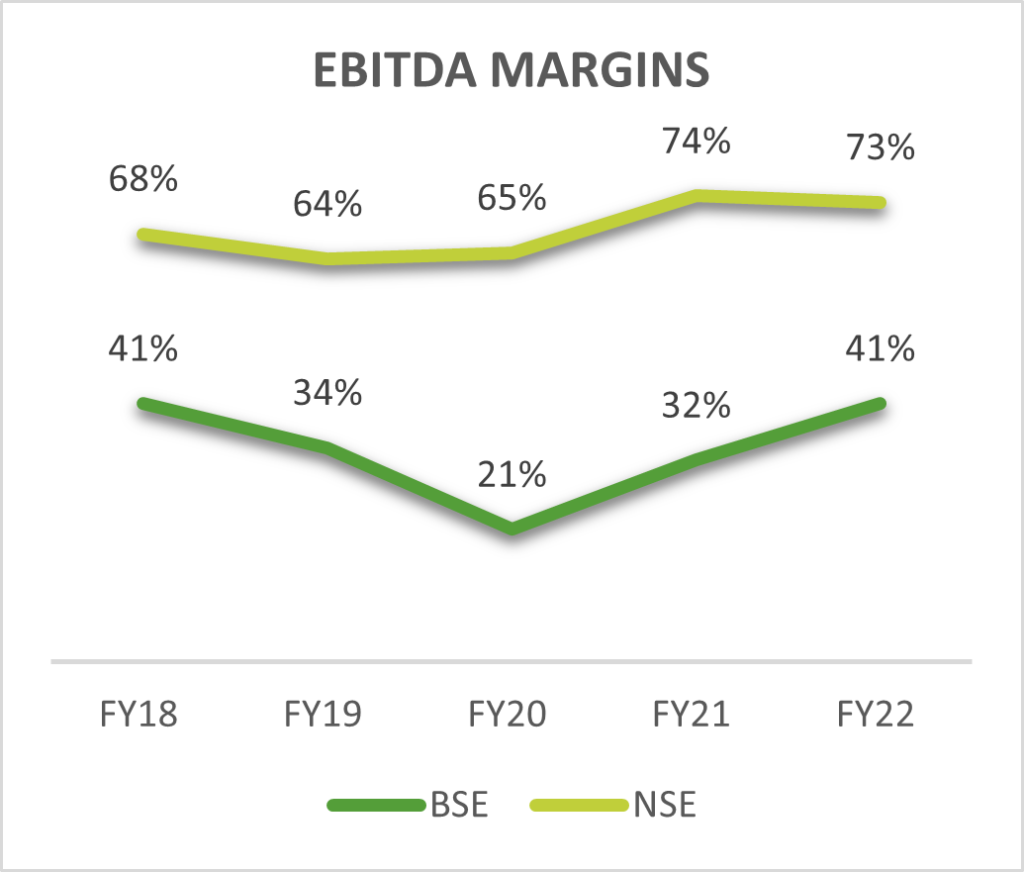
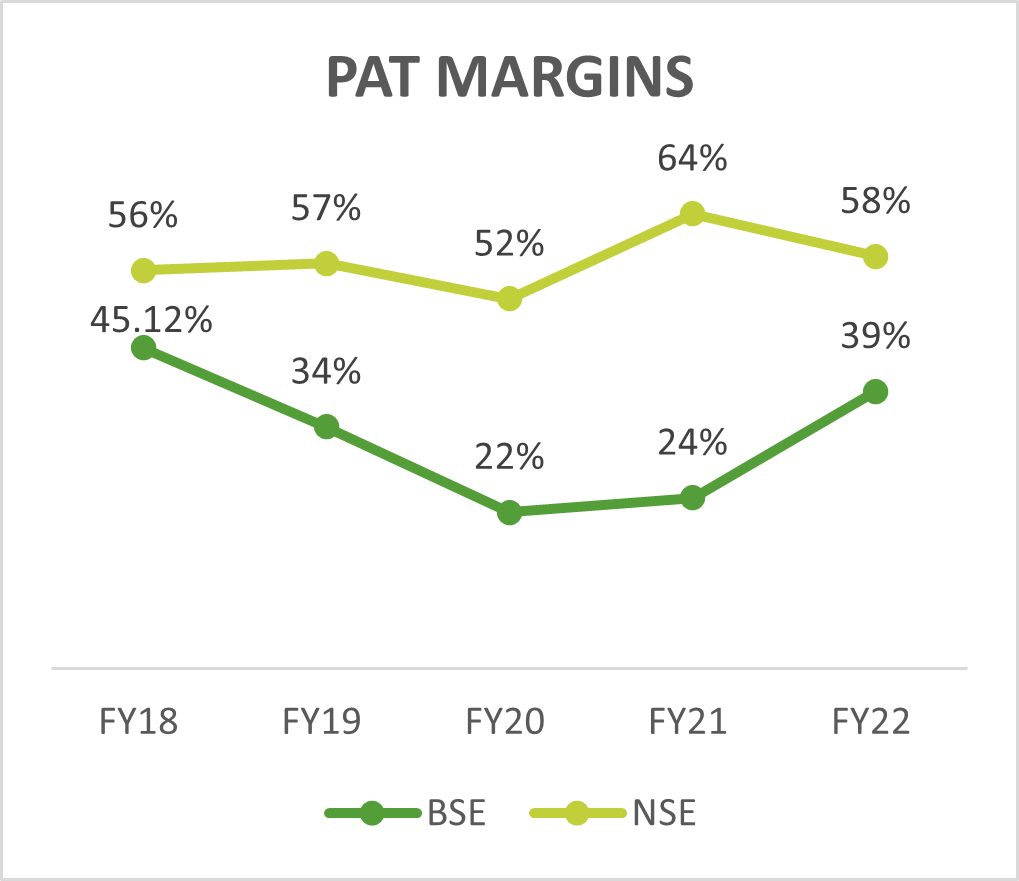
Globally also, when we compare with exchanges like NASDAQ, ICE and HKEX; NSE has grown at a very good rate and is not far behind HKEX.
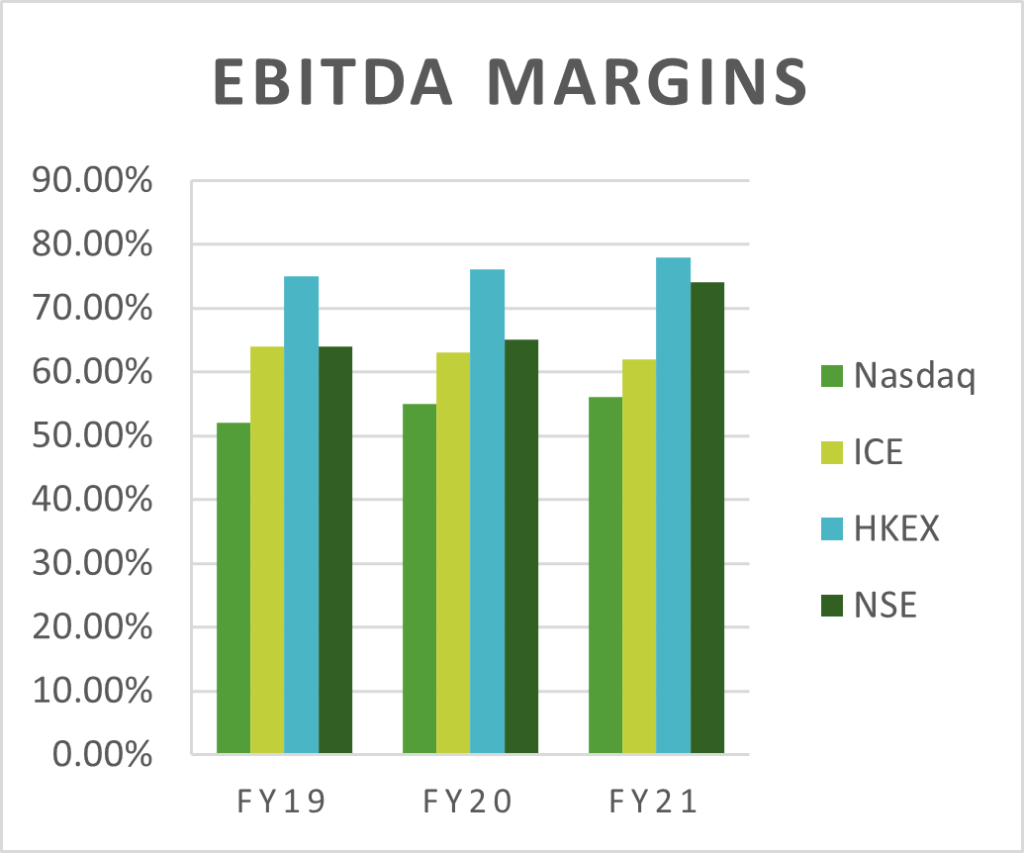
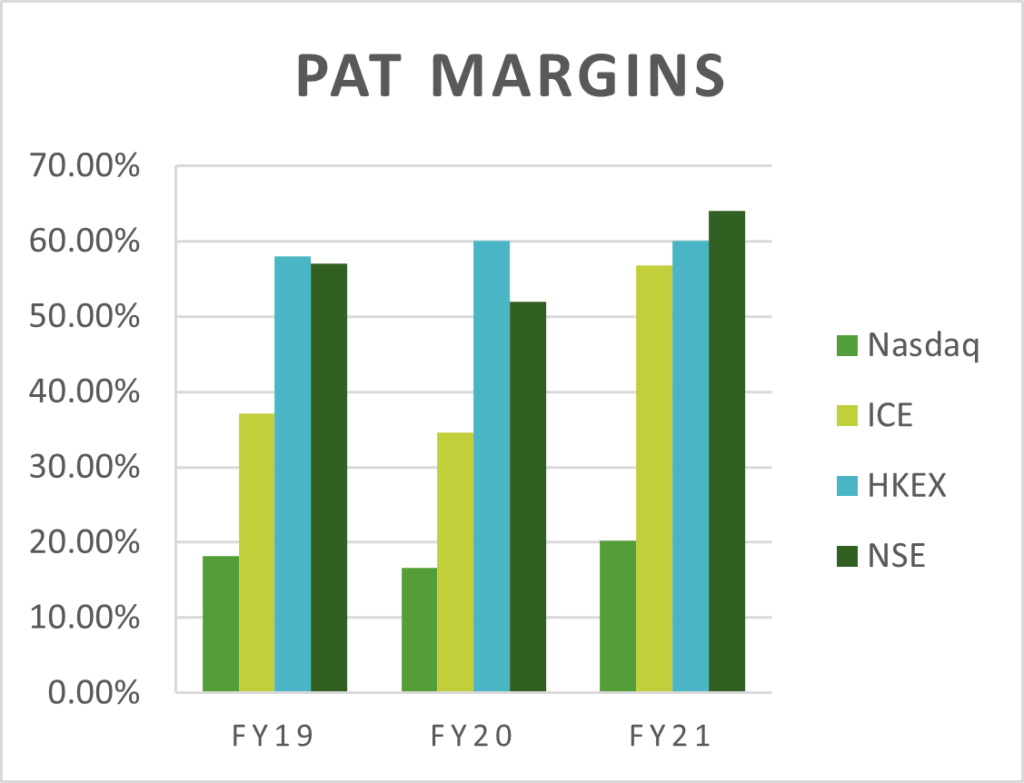

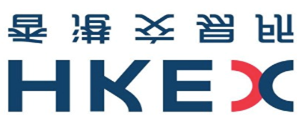
Financials
Income Statement for NSE ltd.

Balance Sheet of NSE ltd. For the years 2018-2022


Return on Equity ratio for years 2018-2022


Disclaimer:
Niveshaay is a SEBI Registered (SEBI Registration No. INA000017541) Investment Advisory Firm. Our research expresses our opinions which are based on available public information, field research, inferences and deductions through our due diligence and analytical process. To the best of our ability and belief, all information contained here is accurate and reliable and has been obtained from public sources, which we believe to be accurate and reliable. We make no representation, express or implied, as to the accuracy, timeliness, or completeness of any such information or with regard to the results obtained from its use. This report does not represent investment advice or a recommendation or a solicitation to buy any securities.


 Follow
Follow